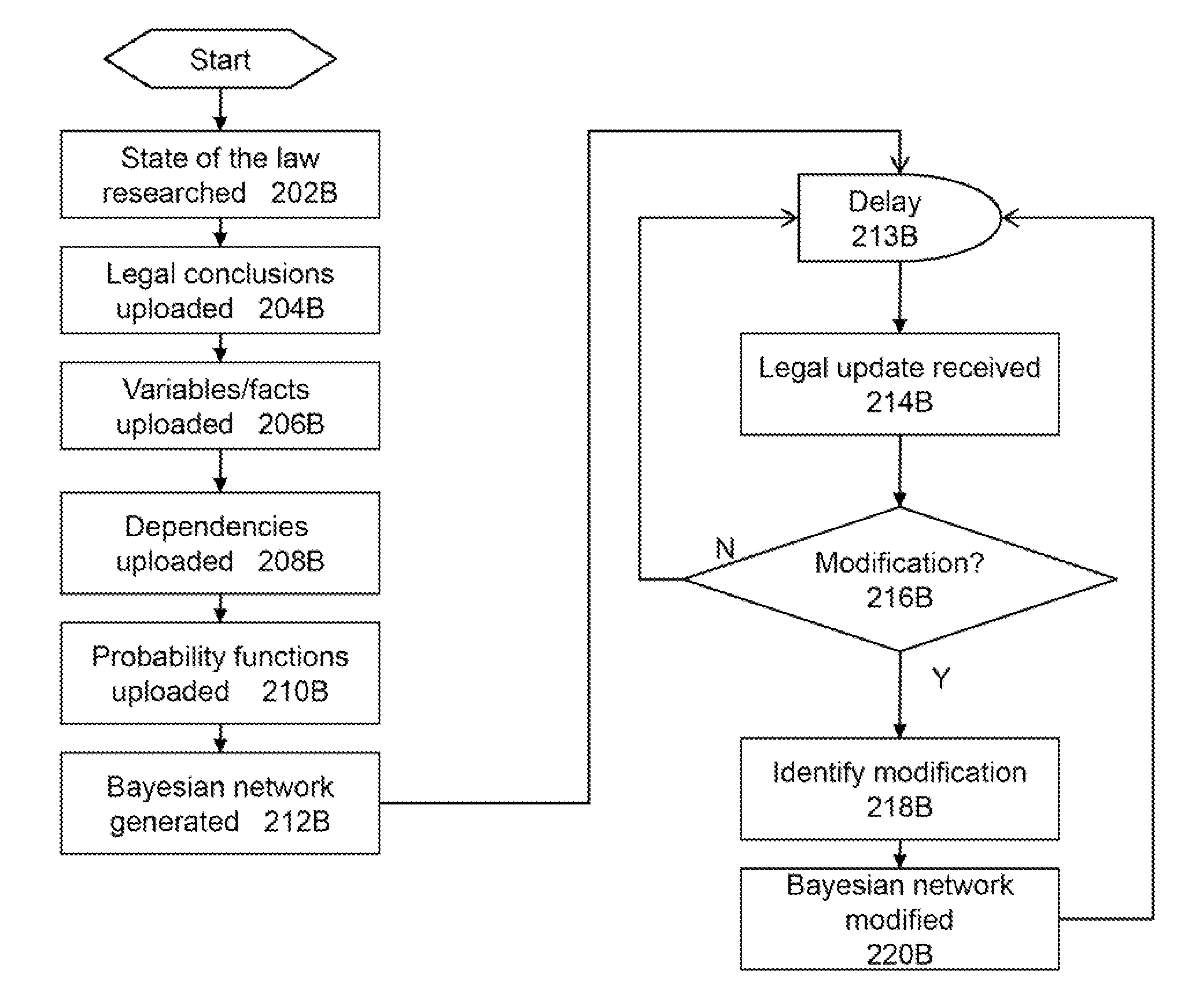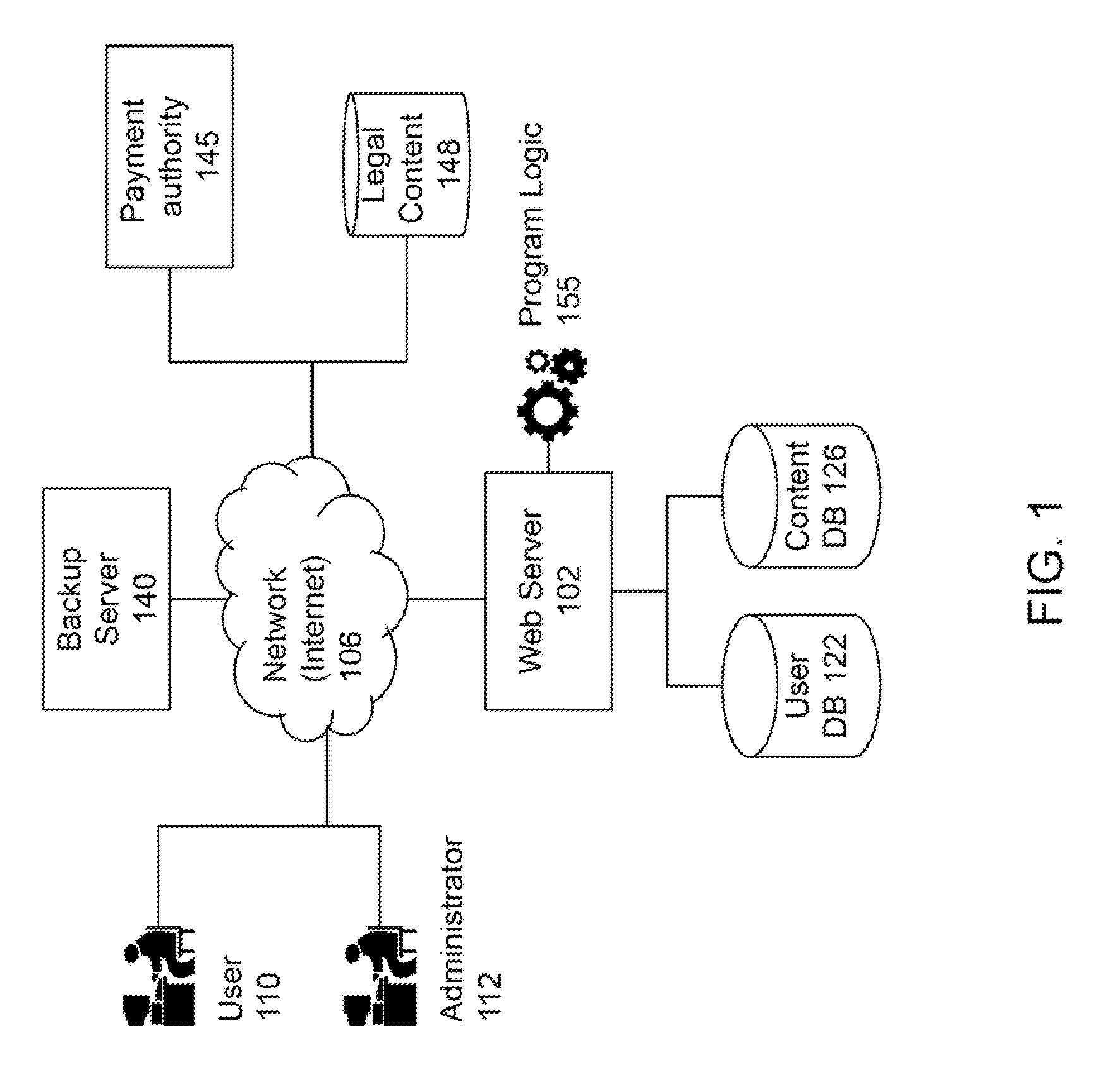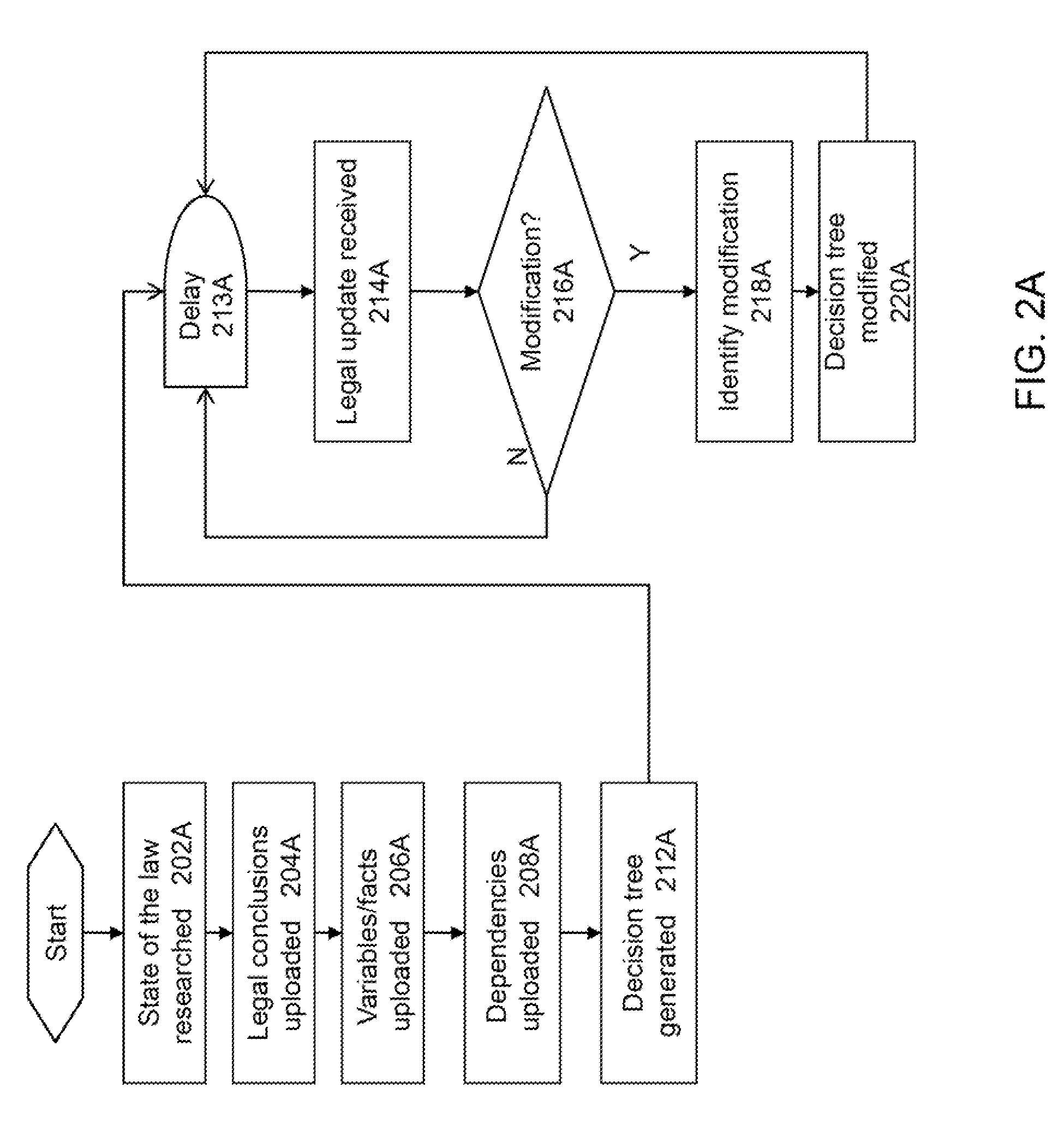Automated Legal Evaluation Using a Decision Tree over a Communications Network
a decision tree and communication network technology, applied in the field of legal analysis, can solve the problems of complex analysis of legal cases or legal scenarios, difficult to understand and categorize the facts surrounding the legal situation itself, and compound the complexity of such an analysis
- Summary
- Abstract
- Description
- Claims
- Application Information
AI Technical Summary
Benefits of technology
Problems solved by technology
Method used
Image
Examples
Embodiment Construction
[0020]The present invention improves upon the problems with the prior art by providing a more effective and efficient automated method and system for providing quick and simple legal analysis using probabilities of legal conclusions or results. The present invention improves over the prior art by increasing usability by a single user, even in complex legal cases that involve large amounts of facts and numerous laws or regulations. This feature saves time and expenses by providing an empirical data-based legal conclusion in a short period of time. The present invention also improves upon the prior art by providing higher accuracy in the legal evaluation. Due to its automated nature, the present invention does not rely on a human to make legal analysis decisions, thereby reducing or eliminating the risk of making a mistake in the course of evaluating large numbers of facts, laws, regulations and court decisions. Further, the automated nature of the present invention removes the natura...
PUM
 Login to View More
Login to View More Abstract
Description
Claims
Application Information
 Login to View More
Login to View More - R&D
- Intellectual Property
- Life Sciences
- Materials
- Tech Scout
- Unparalleled Data Quality
- Higher Quality Content
- 60% Fewer Hallucinations
Browse by: Latest US Patents, China's latest patents, Technical Efficacy Thesaurus, Application Domain, Technology Topic, Popular Technical Reports.
© 2025 PatSnap. All rights reserved.Legal|Privacy policy|Modern Slavery Act Transparency Statement|Sitemap|About US| Contact US: help@patsnap.com



